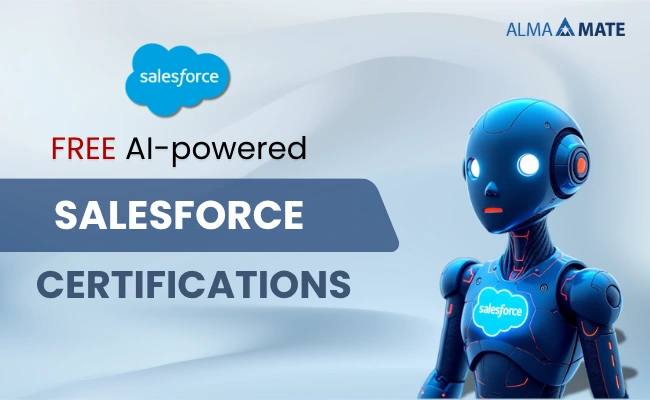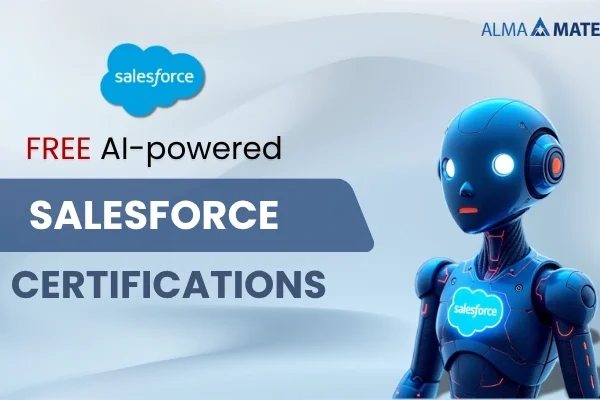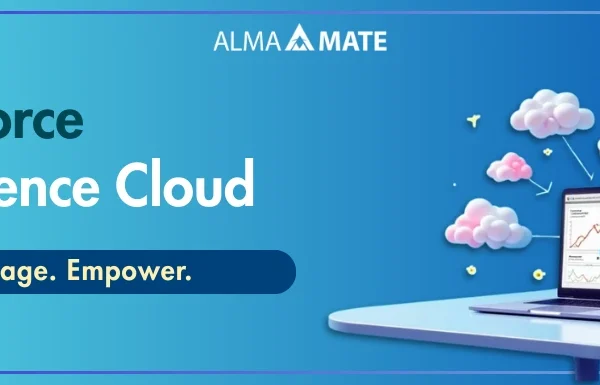Introduction:
In today’s fast-paced business environment, leveraging the power of Salesforce has become indispensable for organizations aiming to drive growth and enhance customer relationships. However, harnessing the full potential of Salesforce requires seamless integration with other systems and applications. In this article, we will delve into the best practices for Salesforce integration, empowering businesses to streamline processes, maximize efficiency, and achieve sustainable growth.

Selecting the Right Salesforce Integration Partner:
Choosing the right integration partner is the cornerstone of a successful Salesforce integration project. These certified experts possess the knowledge, skills, and experience necessary to ensure smooth and efficient integrations.
Selecting an integration partner involves evaluating their credentials, expertise, and track record. Look for partners with relevant certifications and a proven track record of successful integrations across various industries. Collaborating with a reputable integration partner ensures that your integration project is executed efficiently, minimizing risks and maximizing returns.
Partnering with experienced Salesforce integration services providers offers several benefits, including:
- Expertise
Integration services providers bring extensive experience and domain expertise in integrating Salesforce with diverse systems and applications. They offer insights, best practices, and solutions tailored to your specific business requirements.
- Customized Solutions:
These experts assess your unique integration needs and design customized solutions that align with your business goals and objectives. They recommend enhancements and additional functionalities to optimize Salesforce usage and maximize ROI.
- Implementation and Support:
Integration services providers handle the end-to-end integration process, from planning and designing to implementation and ongoing support. This allows your internal teams to focus on core business activities while ensuring seamless integration execution and support.
- Cost Savings:
Partnering with integration services providers can result in cost savings by avoiding costly mistakes, minimizing downtime, and ensuring a smooth and effective integration process. They help optimize resource utilization, streamline workflows, and drive operational efficiencies, ultimately maximizing ROI and business value.
Maximizing Integration Benefits:
Effective Salesforce integration goes beyond connecting systems; it streamlines workflows, eliminates manual tasks, and provides actionable insights that drive business growth. By centralizing data and automating processes, Salesforce integration empowers sales, marketing, and customer support teams to access real-time information and make informed decisions. This holistic approach enhances productivity, improves customer experiences, and drives revenue growth. Businesses can leverage integrated data to personalize marketing campaigns, tailor sales strategies, and deliver exceptional customer service, to ultimately gain a competitive edge in the market.
Key Best Practices for Salesforce Integration:
- Defining Clear Integration Goals:
Before embarking on a Salesforce integration project, it’s essential to define clear objectives and goals. Whether the goal is to streamline sales processes, enhance marketing campaigns, or improve customer service, clarity on objectives is crucial for project success.
Define specific, measurable, and achievable goals for the integration project. Conduct a thorough analysis of business requirements, identify key stakeholders, and prioritize objectives based on business impact. Clear goals serve as a roadmap for the integration project, guiding decision-making and ensuring alignment with organizational objectives.
- Choosing the Right Integration Method:
Salesforce offers multiple integration methods, including point-to-point, API-based, and middleware solutions. Selecting the appropriate integration method depends on factors such as system complexity, scalability requirements, and budget constraints.
Evaluate the pros and cons of each integration method based on project requirements and objectives. Consider factors such as data volume, real-time processing needs, and system compatibility when choosing the right integration approach. Collaborate with integration experts to identify the most suitable method that aligns with your business goals and technical requirements.
- Ensuring Data Quality:
Maintaining data integrity is critical for the success of any Salesforce integration project. Establish data governance policies, data validation rules, and access controls to ensure data accuracy and consistency across integrated systems. Implement robust data governance practices to enforce data quality standards and prevent data inconsistencies. Define data ownership, validation rules, and data synchronization processes to ensure a single source of truth across integrated systems. Regularly monitor data quality metrics and address any issues promptly to maintain data integrity throughout the integration lifecycle.
- Planning for Scalability:
Anticipating future growth and scalability is essential when designing a Salesforce integration solution. Ensure that the integration architecture is flexible, scalable, and adaptable to evolving business needs.
Design the integration architecture with scalability in mind, leveraging scalable infrastructure, and modular components. Consider factors such as data volume, user growth, and system complexity when planning for scalability. Adopt best practices for architecture design, such as microservices architecture, event-driven architecture, and cloud-native solutions, to ensure seamless scalability and performance optimization.
- Prioritizing Security and Compliance:
Protecting sensitive data is paramount in any Salesforce integration project. Adhere to industry regulations, implement robust security measures, and encryption protocols to safeguard data privacy and compliance.
Implement multi-layered security measures to protect stored data and data in transit. Utilize encryption, access controls, and authentication mechanisms to ensure data confidentiality and integrity. Regularly audit security controls, conduct penetration testing, and vulnerability assessments to identify and mitigate security risks proactively. Collaborate with security experts to implement industry best practices and ensure compliance with regulatory requirements such as GDPR, HIPAA, and CCPA.
- Thorough Testing and Quality Assurance:
Comprehensive testing is essential to validate the functionality, performance, and reliability of the Salesforce integration solution. Conduct rigorous testing across all integration touchpoints to identify and address any issues before deployment.
Develop a comprehensive testing strategy that includes functional testing, regression testing, and performance testing. Create test cases to validate data mappings, error handling, and exception scenarios. Leverage automation tools and frameworks to streamline testing processes and improve test coverage. Collaborate with stakeholders to conduct user acceptance testing (UAT) and ensure that the integration solution meets business requirements and expectations.
Conclusion:
Salesforce integration is imperative for businesses looking to drive growth, enhance customer experiences, and stay competitive in today’s digital economy. By following best practices, leveraging integration services, and prioritizing scalability, security, and compliance, organizations can unlock the full potential of Salesforce and achieve sustainable success. With a clear understanding of integration goals, careful planning, and collaboration with experienced partners, businesses can navigate the complexities of Salesforce integration with confidence and achieve their desired outcomes.
**Disclaimer: Images used in this article have been downloaded from freepik.com for illustrative purposes only.















